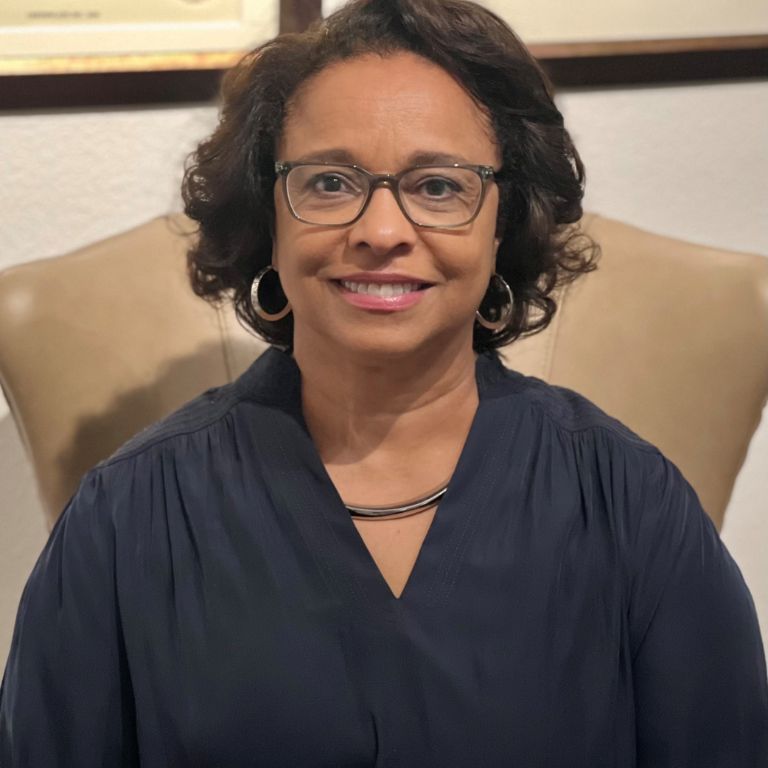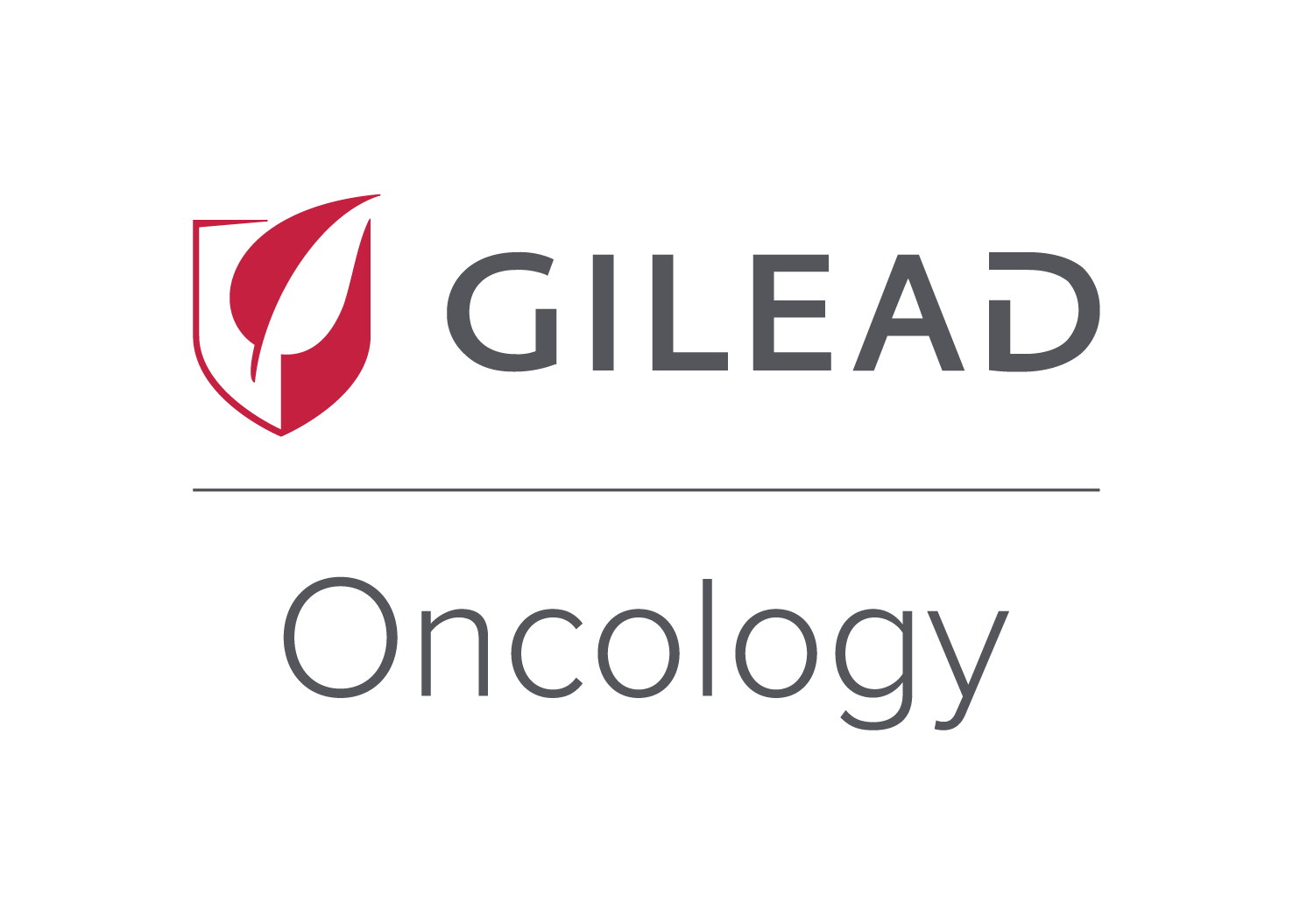Each year, the annual San Antonio Breast Cancer Symposium brings together a global audience of academic, private physicians, researchers and advocates involved in breast cancer and provides a unique platform to learn about cutting-edge research, interact with colleagues, and discuss the latest scientific advances in a multidisciplinary setting to learn about the latest innovations in breast cancer research and education.
Stephanie Graff, MD, FACP, director of breast oncology at the Lifespan Cancer Institute at Brown University, provides updates from this year’s symposium in conversation with moderators Jean Sachs, MSS, MLSP, CEO of Living Beyond Breast Cancer, and Toni Willis, patient advocate.
Learn how the latest breast cancer research impacts you. This webinar is for both those with early-stage and metastatic breast cancer. Attendees had the opportunity to ask questions during this free webinar.
On this page
About our speaker

Stephanie Graff, MD, FACP
Director of breast cancer oncology, Lifespan Cancer Institute, Legorreta Cancer Center, Brown University
Dr. Stephanie Graff, MD, FACP, is the director of breast oncology at Lifespan Cancer Institute at the Legorreta Cancer Center at Brown University in Providence, Rhode Island. She is an associate professor of medicine at the Warren Alpert School of Medicine and co-leads the Breast Cancer Translational Research Disease Working Group.
Read moreAbout our moderators

Jean Sachs, MSS, MLSP
CEO, Living Beyond Breast Cancer
Jean has devoted much of her professional career to educating and supporting those impacted by breast cancer. A social worker by training and at heart, she values making time to connect one-on-one with women when they are struggling with their breast cancer diagnosis. This keeps her grounded and deeply connected to the mission.
Read more
Toni Willis
Patient Advocate, Texas
Toni was diagnosed with triple-negative breast cancer in 2013 and with a metastatic recurrence in 2015. She has been an LBBC Hear My Voice Advocate since 2022. A physician, she is passionate about advocating for improved access to care and greater patient involvement in clinical trials.
Read moreThank you
Title
Signature
Benefactor
Stay connected
Sign up to receive emotional support, medical insight, personal stories, and more, delivered to your inbox weekly.
Transcript
Jean Sachs, MSS, MLSP (00:14):
What we’re going to do is let Dr. Graff give a few highlights of the many things that happened in San Antonio. Then I will be joined with one of our leadership volunteers, Toni Willis, and together we will moderate the questions. I’m going to turn this over to you, Dr. Graff.
Stephanie Graff, MD, FACP (00:34):
Thank you so much for having me.
I’m going to start with a big disclaimer, which is that San Antonio Breast Cancer Symposium just finished on Saturday, so I certainly do not have every single presentation memorized two days later. I came back Monday after a complicated travel weekend and was in clinic. I am synthesizing this data right alongside of everyone.
And my second disclaimer is that everything presented at San Antonio is presented in abstract form, which is not yet peer reviewed. And so it’s not its highest level of science yet. As things go through the peer review process, often statistical review just cleans the data a little bit better. Sometimes we see things change as it enters the publication phase. So we continue to wait for this data all to be finalized and just make sure that it is where we expect it to be.
I know there’s many from the metastatic community on the call, so I’m going to start in the metastatic space.
The first trial I’m going to talk about that was presented at San Antonio this year is the MONARCH 3 trial. MONARCH 3 was a phase III randomized trial that took patients who had metastatic hormone receptor-positive, so estrogen receptor-positive and/or progesterone receptor-positive breast cancer and randomized them to abemaciclib [Verzenio] plus an aromatase inhibitor versus an aromatase inhibitor plus placebo. Patients were randomized two to one to the combination with abemaciclib and 493 patients were enrolled in the trial. And what was presented at San Antonio was the overall survival analysis in, hopefully, one of the final follow-ups.
This study or this analysis showed that an improvement in overall survival was seen with an improvement of 13.1 months for the addition of abemaciclib improving overall survival from 53.7 months for patients that received the aromatase inhibitor alone to patients who received abemaciclib plus the aromatase inhibitor having a median overall survival of 66.8 months for a hazard ratio of 0.84, but it did not meet its P value for statistical significance because that hazard ratio crossed one.
Now this showed an improvement in overall survival of 13.1 months. So I think there’s some statistical problems with this trial. It’s a two-sided alpha allocation—and I don’t want to bore everyone with biostatistics—and it’s a two to one randomization schema, which means that and the power of the study, it’s an 88% power allocation, which is actually a really high power allocation. And so all of those things sort of combined that meant that unlike MONALEESA-2, which is the ribociclib [Kisqali] trial which had an 80% power allocation, it just was a lot harder for this much smaller study with a two to one randomization scheme to hit that P value. But I think that that huge difference in survival is hard to ignore. And for me, this is not going to make me shy away from using abemaciclib.
Conversely, we had seen with palbociclib [Ibrance] earlier on the PALOMA-2 data that the overall survival data with that showed a change in 2.7 months with overall survival for PALOMA-2 and it also didn’t meet its P value. And that delta, that difference in 2.7 months wasn’t nearly as impressive as this 13.1 month improvement in overall survival. And so I think that that’s why you see a little bit of divergence in how we’re talking about the PALOMA-2 result with palbociclib versus this MONARCH 3 result with abemaciclib across those two trials.
The next trial that we saw in the metastatic breast cancer space was a INAVO120, which was a really unique population, which is I think one of the biggest key takeaways from that trial. This took patients who were first line metastatic hormone receptor-positive, PIK3CA-mutant disease and had progressive disease within 12 months of completing their adjuvant endocrine therapy. So these are patients that had primary disease resistance, rapid progression, and a PIK3CA mutation.
The population was a very young population. So when we look at the study, about 40% of the patients were premenopausal, about 80% of the patients had visceral disease, so involvement in either their lungs or their liver, and the vast majority of the patients had progressed while they were receiving adjuvant endocrine therapy.
In that trial we saw patients were randomized to either receive placebo plus palbociclib plus fulvestrant, which is the control arm, or inavolisib, which is a nine milligram oral tablet. We’re going to call it Ina [inavolisib]because I’m going to learn how to say it with everyone else—which is a very potent PIK3CA inhibitor in combination with palbociclib and fulvestrant—and palbociclib and fulvestrant. So that triplet was the intervention arm and they received that until evidence of progressive disease.
In order to be eligible for this trial, patients also had to have, because PIK3CA drugs can cause high blood sugars, patients had to have a fasting blood sugar of less than 126 or/and a hemoglobin A1C of less than six. My guess is that this was also a really healthy patient population, because to have a fasting blood sugar that’s that low and a hemoglobin A1C that’s that low means that these are all probably patients that are pretty thin and certainly nobody with diabetes. What we saw was that patients that were randomized to the triplet, so the new PIK3CA drug, inavolisib, improved median progression-free survival significantly with a median progression-free survival improving from 7.3 months with the control arm to 15 months, essentially doubling with the addition of the triplet.
My questions about this trial is that the control arm did not include a targeted PIK3CA drug in a PIK3CA-mutant population, and we do have now two therapies approved for PIK3CA mutations. We have alpelisib [Piqray], we have capivasertib [Truqap]. So was that the best control arm?
It also included palbociclib, which is the CDK 4/6 inhibitor that we do not have clear data improves overall survival. I know they used palbociclib because it’s also probably the easiest CDK 4/6 inhibitor to use in combination with other CDK 4/6 inhibitors because of the side effect profile.
I’m not sure that this is the optimal triplet or the optimal control arm, and so we’ll see where it goes.
This is also a very specific, narrow population of patients rapidly progressive, mostly young PIK3CA-mutant, hormone receptor positive patients. And so very significant response to the triplet therapy. But how this will change our clinical practice, I think we need to see the publication come out. We need to get additional information on the subgroup and the tolerability. There was a very high rate of neutropenia. There was a very high rate of stomatitis, which means inflammation in the mouth, also anemia and thrombocytopenia, all likely mediated by the palbociclib, and hyperglycemia, mediated by the PIK3CA drug and a 48% risk of diarrhea, which is obviously substantial. So also some tolerability issues we need to work out.
Jean Sachs, MSS, MLSP (10:15):
Dr. Graff, Just seeing a question, so I just thought I’d interrupt you for a second. Someone’s asking what is the mutation? Can you explain? Not everybody knows.
Stephanie Graff, MD, FACP (10:24):
Sure. So PIK3CA, what a great question. I have to think about how to describe PIK3CA.
PIK3CA is an activating mutation that turns a cancer on and tends to tell it to divide more rapidly. We have several different mutations that we are able to test for in hormone receptor-positive breast cancer. Right now in breast cancer we test for PIK3CA. We are really only testing for PIK3CA in hormone receptor-positive breast cancer. It is an activating mutation. So most tumors have PIK3CA present throughout the duration of that cancer being present. It’s not a mechanism of resistance. It doesn’t develop as a response to exposure to treatments. And PIK3CA is a protein that’s involved in how that cell divides and grows. And so when it is mutated, it causes the cell to grow faster.
The other mutations that we test for are obviously BRCA1 and BRCA2, which can be somatic in the cancer or germline in you as a human passed from your parents, potentially to your children. And the germline mutations are targetable with drugs called PARP inhibitors.
And then we also test for something called ESR1, and we’ll talk about that in a second. ESR1 is a mechanism of resistance. It happens in the cancer as a result of exposure to hormone blockers like anastrozole, letrozole, tamoxifen, and the hormone receptor, the estrogen receptor, actually becomes mutated and those medicines don’t fit into that receptor as well anymore and makes basically a new receptor. That new receptor has a different configuration, and so you need a different medicine to fit more neatly into that new mutated receptor shape. That is something that we typically test for using blood-based testing after progression on prior hormonal therapy. I hope that helps. Thank you for that question, Jean.
Okay, next update that we got that I think is important is HER2CLIMB-02. Many of you have probably heard of HER2CLIMB. When we talk about HER2CLIMB, we have historically met HER2CLIMB-01, which was a trial that used tucatinib [Tukysa], which is an oral HER2-blocking drug, in combination with capecitabine and Herceptin[trastuzumab]. HER2CLIMB-02, same trial name with the twist, completely different combination.
HER2CLIMB-02 uses tucatinib in combination with T-DM1. The brand name of that is Kadcyla. And so T-DM1 is an IV medicine that’s given once every three weeks. And this trial, HER2CLIMB-02 took patients who had progressed on first-line therapy for HER2-positive metastatic breast cancer and randomized them one-to-one to T-DM1or T-DM1 plus tucatinib—at the time, that was the standard of care—and followed them for progression-free survival as the primary endpoint. Dr. Sara Hurvitz presented that primary analysis and showed that the combination, T-DM1 plus tucatinib, improved progression-free survival from 7.4 months for T-DM1 alone to 9.5 months for the combination.
Now since HER2CLIMB-02 was designed, we’ve seen the results of DESTINY-Breast03 showing trastuzumab deruxtecan [Enhertu] in this space. Compared to what trastuzumab deruxtecan improved progression-free survival for HER2-positive metastatic breast cancer in the second line, this is a less dramatic response. And so I think that the audience at San Antonio saw an improvement from 7.4 months to 9.5 months and said, “Yeah, okay, that’s better.” But maybe not this huge response that we were hoping for.
Just like with HER2CLIMB-01, HER2CLIMB-02 did allow patients to go on who had stable brain mets, untreated brain mets as well. And we saw a similar benefit in patients who had stable or untreated brain metastasis from 5.7 months to 7.8 months in that population. Overall survival data is still pending.
My takeaway from this trial is that this does make the HER2CLIMB-02 regimen a reasonable option for second line therapy in HER2-positive metastatic breast cancer. I think trastuzumab deruxtecan is going to be our standard, but I think for patients everywhere, it’s important to have options because trastuzumab deruxtecan may not be the best choice for everyone. They may have lung disease that makes that not an option for them. Trastuzumab deruxtecan is being evaluated in the first line setting, and so if it ultimately gets approval in that setting, HER2CLIMB-02 gives us clear evidence that we can use tucatinib in second line.
And then because of the way that patients with brain metastasis are included in this population, it gives us added data for patients who maybe are having more active disease in their brain and how to consider that brain metastasis population. Although again, data continues to emerge for trastuzumab deruxtecan in the brain metastasis population as well.
Lots of data that is bouncing around. And again, I think we’re going to wait for the lots of data that is going to emerge as we see the publication come out.
I think those are probably the big ones I wanted to review. And then I’m going to let Jean hit me with questions and then I can go over some early-stage updates too if Jean doesn’t have too many questions for me.
Jean Sachs, MSS, MLSP (17:42):
No, we have a lot of questions, but I want to make sure we include early stage, but let’s bring on Toni Willis, who is a newly trained Hear My Voice Advocate with Living Beyond Breast Cancer. She joined us in San Antonio. She is living with metastatic breast cancer, and I’m so happy to have her because she’s going to help me sort through these questions. Welcome, Toni.
Toni Willis (18:10):
Yeah. Dr. Graff, before you move on from the HER2 population, there was a question. Is there any information about the long-term effects of being on Herceptin and Perjeta [pertuzumab] plus an AI [aromatase inhibitor] for triple-positive breast cancer? This person has been on for these medications for approximately four years.
Stephanie Graff, MD, FACP (18:30):
There is not. I mean, we have long-term follow-up on Herceptin and there’s not been any late toxicity reported. I certainly have patients that have been on Herceptin and Perjeta for 10 years plus and we haven’t had any negative late reports even to the FDA [Food and Drug Administration] and to watchdog groups.
There is a current clinical trial enrolling called STOP-HER2, Dr. Heather A. Parsons at Dana-Farber is the PI [primary investigator], that is enrolling patients who have either stable disease or no evidence of disease that are on HER2-targeting therapy alone without a chemotherapy backbone. For example, somebody who is on docetaxel, Herceptin, Perjeta, stopped the docetaxel and now has chugged along for many years on Herceptin and Perjeta alone. And after stability for a while, the trial randomizes you to stop those medicines. Then you enter active surveillance with frequent scans, and it is testing the hypothesis that those patients can safely stop that therapy, which we’ve seen in other diseases, for example, melanoma with immune checkpoint inhibitors. And so I offer that to anyone in the audience that is on those therapies and is interested in participating in a trial testing that concept. I myself have referred patients for that option.
Jean Sachs, MSS, MLSP (20:11):
Yeah, it’s so exciting. We actually have, if anyone is interested, we do know a couple of women who are in the STOP-HER2 trial and what an amazing thing to get to that point in metastatic breast cancer.
I’m just going to ask, there are a new class of drugs that have been approved or at least one SERDs, and there are just some questions. Can you explain what is a SERD? And I know you talked a little bit about the trial, but maybe I know there are more coming in trials now.
Stephanie Graff, MD, FACP (20:44):
Yeah, so the SERD—selective estrogen receptor degrader—or SERM—selective estrogen receptor modulator—are a new class of anti-estrogens. They are selective because they block the action of estrogen in breast cells, but not necessarily other cells, although the selectivity of those medicines is variable depending on the medication. For example, our oldest SERD is tamoxifen, and the reason that it’s not a hundred percent selective for breast tissue is also why we see a slightly higher risk of endometrial cancer or uterine cancer with tamoxifen is because it also has some estrogenic properties in the uterus and why you can see some other anti-estrogen effects.
They work by degrading the receptor so that estrogen then can’t bind that breast cancer, which is really sort of the gasoline that’s fueling the fire of the breast cancer. By binding the receptor and downregulating it or modulating that receptor, deactivating that receptor, it allows the cancer to neutralize in a way that helps it not continue to grow.
Right now, in addition to fulvestrant and elacestrant [Orserdu]—so fulvestrant, Faslodex, is our oldest SERD, elacestrant is our newest SERD and is oral—there are numerous other ones that are on the market and being evaluated, including imlunestrant and lasofoxifene, and we will figure out which direction we go from here.
Toni Willis (23:00):
Well this is sort of a general question, but the question is: Is there anything new for triple-positive early-stage breast cancer?
Stephanie Graff, MD, FACP (23:10):
Any new directions for triple-positive, early-stage breast cancer?
Yes, so frustratingly for the triple positive—or co-positive is my language, and I apologize, I’m going to switch words on you—or the co-positive community, we don’t often talk about it like that, which I know is difficult. You’re not going to see a trial published that says, “Hey, for the co-positive world.”
We tend to focus on the front side, on HER2 positive, and then on the back side on hormone receptor positive. A patient who is co-positive is going to be eligible for many of the HER2-positive chemotherapy neoadjuvant or adjuvant trials and then many of the hormone receptor-positive adjuvant studies.
You have to piece together the data, and that is difficult. I would love to see the data reported in a way that made it a little bit [easier] to see the truth of your cancer experience for patients that are co-positive.
Right now in the HER2-positive, early-stage breast cancer space, there are several trials going on. So right now we give neoadjuvant chemotherapy most often with a taxane, Herceptin, Perjeta based chemotherapy regimen. And then based on response at the time of surgery, if a patient has what we call a pathologic complete response—which means your cancer is totally dead and gone at the time of your surgery, what is surgically removed is just dead cancer cells or nothing left there, great—you can finish one year of Herceptin. But if there is still residual cancer, the risk of recurrence slightly higher. And in that scenario, patients are changed to receive T-DM1, the medicine we spoke about earlier.
There are several trials right now looking at doing something different than T-DM1. There are trials looking at trastuzumab deruxtecan and there are trials at looking at adding tucatinib to T-DM1. I think that both of those trials will report out in the not-so-distant future, maybe in the next two years.
And then in the hormone receptor-positive space, there are several trials looking at those SERDs that we were just talking about—elacestrant, imlunestrant, et cetera—using those in the high risk hormone receptor-positive population—mostly positive lymph node patients—to see if we can improve upon the outcomes that we’re currently getting with medicines like anastrozole and letrozole. And if not improve upon the outcome, improve upon the toxicity profile by offering those medicines as an alternative. But none of those are ready for primetime yet.
Jean Sachs, MSS, MLSP (26:27):
I know there’s a lot of questions in here, I just want the audience to know, that weren’t related to things that were reported at SABCS
Stephanie Graff, MD, FACP (26:33):
I just looked the Q&A box and there’s over 60. I’m like, wow!
Jean Sachs, MSS, MLSP (26:36):
So I want to try to focus on what was reported on, but were there any updates on the use of immunotherapy in either early stage or metastatic?
Stephanie Graff, MD, FACP (26:48):
Yeah, so I can give two quick, I’ll just do the early-stage breast cancer updates very quickly.
There were several updates from surgery and radiation oncology, mostly looking at what to do about lymph nodes after neoadjuvant therapy and what to do about radiation after neoadjuvant therapy. And just in the interest of time, the CliffNotes version is less is more and a good response to neoadjuvant chemotherapy can be believed. For patients that have a pathologic complete response, we can use that pathologic staging to drive our treatment decisions, which is fantastic. All of those are really practice affirming, many major institutions that already should have shifted to practicing that. And I think that that should drive change in most of the major guidelines that hadn’t already shifted.
In the treatment landscape. We did get some updates on immunotherapy. We saw an update on a trial called KEYNOTE-756 as well as a trial called CheckMate 7FL. And I’m going to talk mostly about KEYNOTE-756 because they’re very similar and I think that it’s again, just big picture.
KEYNOTE-756 is not practice changing yet because we need longer term follow up on the data. But KEYNOTE-756 is a trial that took patients with high-risk hormone receptor-positive, early-stage breast cancer. And high risk is defined as either positive lymph nodes or large primary tumors—so tumors larger than five centimeters or positive lymph nodes—and grade 3 tumors. It did include patients that were what we call ER-low, so patients that had estrogen receptors of less than 10% but not exclusively that population. It randomized them to receive standard chemotherapy which is doxorubicin, cyclophosphamide, AC as we call it, followed by Taxol or that same combination with pembrolizumab—essentially the KEYNOTE-522 regimen that some of you might know from early-stage triple-negative breast cancer—neoadjuvantly, followed by surgery and then depending on their response patients then would go on to receive another six months of pembrolizumab.
What we saw was that at this interval analysis, patients that received the addition of the pembrolizumab had a significant improvement in the rate of pathologic complete response. Now again, this is hormone receptor-positive disease, so we don’t get the sky high rates of pathologic complete response that we see in triple-negative breast cancer, but the rate of pathologic complete response improved from 15% to 24% with the addition of pembrolizumab. In the CheckMate trial, which is similar using nivolumab [Opdivo], we also saw a similar improvement in pathologic complete response rate.
On subgroup analysis, which was really the key presentation at San Antonio this year, they broke that down by several biomarkers including PD-L1. And what we saw was that in patients that were very PD-L1 positive, which was a CPS score of 10 or a CPS score of 20, that pathologic complete response rate reached 40% to 50% depending on the PD-L1 status. And I think that this really tells us that there is a proportion of hormone receptor-positive breast cancer patients that are very immune sensitive to medicines like pembrolizumab.
Before this is practice changing, we will need to see event-free survival follow up, and that has not yet been reported. Immunotherapy comes with a lot of side effects and we will not do that lightly as a breast cancer community.
We also saw longer term follow-up on KEYNOTE-522 in the triple-negative community. This of course has been standard practice now for many years. The update we saw, actually at ESMO but I’ll give it to you today because we’re talking, was the five-year event-free survival by rate of pathologic complete response, and then some subgroup analyses including on the lymph node negative breast cancer patients. And we really saw that all patients, even stage II, lymph node negative and T2, N0, which are patients that I don’t love giving all this extra treatment to, really benefited from the addition of the pembrolizumab. So really solidified that KEYNOTE-522 is a well-designed trial that selected a good group of patients to receive this added combination of therapy.
Jean Sachs, MSS, MLSP (32:25):
Do you have a question, Toni?
Toni Willis (32:27):
I do. I know there was a lot of discussion about this topic. What is the utility and use of ctDNA [circulating tumor DNA] testing for monitoring cancer?
Stephanie Graff, MD, FACP (32:38):
So I do not think that ctDNA is primetime for monitoring cancer. I would encourage anyone who’s interested in that to look for trials that are in their area that are analyzing ctDNA for monitoring cancer recurrence.
The answer is so complicated. I’m sorry, this is a hard question, Toni. You don’t even know how hard of a question you just asked.
Part of it is that the tests aren’t perfect, right? I’m going to use, I actually presented the ctDNA feasibility cohort from monarchE, so I’m going to use that one because I can quote the data to you very quickly and easily. In that cohort, which was enriched for patients at an increased risk of recurrence, we selected a very high risk of recurrence population to do the feasibility pilot on, the false negative rate—the likelihood the patients that were persistently ctDNA negative who had their cancer recur anyway was 21%.
So doing a ctDNA assay to say, “There’s nothing for me to worry about,” isn’t true. And in that feasibility cohort there was 30% of patients that were ctDNA positive, took their prescribed therapy and cleared their ctDNA and had no evidence of cancer recurrence. So having a positive ctDNA doesn’t mean all hope is lost, it means that you should keep on keeping on.
Att this point, I don’t know what to tell somebody who has a ctDNA assay, other than that I have quadrupled their anxiety in my anxiety. I think that it’s a really, really important question, but I want to make sure that we are asking that question in a way that is thoughtful and benefits everyone because that’s how we learn and grow. To do a test that is not reliably informative, and that we don’t know how to respond or react to, is hard as a physician to then counsel someone on.
Jean Sachs, MSS, MLSP (35:37):
Yeah, thank you for being so transparent. Living Beyond Breast Cancer has covered this topic and we’ll continue to write about it. So if anyone wants to know more, feel free to reach out. Hopefully it holds promise in the future. It would certainly be really great to predict if treatment wasn’t working well earlier.
I’m going to try to give you an easy question. I think there was data presented. Is a lower dose of Verzenio [abemacicilib] as good as the higher dose so that you can reduce the side effects?
Stephanie Graff, MD, FACP (36:11):
Yeah, we actually saw that at ASCO 2023 that in patients treated with abemaciclib. Patients that had a dose reduction did not have a worse outcome than patients who did not have a dose reduction.
Now I would add the caveat that those patients were dose reduced because they were having side effects on clinical trial. And so it may be that when side effects drive your dose reduction, it’s a biological marker of how you respond to the drug. So that’s a little bit different than just starting your dose low. Similarly in adjuvant, so early-stage ribociclib, the trial design used a lower starting dose based on a biologic rationale for that lower dose. Instead of, in the metastatic setting ribociclib is approved at 600 milligrams and in the adjuvant or early-stage disease the trial, NATALEE, is using 400 milligrams and there’s a scientific rationale for that.
Jean Sachs, MSS, MLSP (37:35):
That’s great. You explained that really well. Thank you. Toni? Got a question?
Toni Willis (37:41):
Well, and I think triple-negative breast cancer hasn’t really been discussed much today. Were there any new reports at the conference about treatments for triple-negative breast cancer?
Stephanie Graff, MD, FACP (37:57):
Great question. Thank you. You’re right. This was not a big year for triple-negative breast cancer. I feel like we do this roller coaster thing where we research drugs and then a bunch of stuff comes out and then nothing comes out and then we’re researching new drugs. So we have a HER2 year and then we have an ER-positive year and it roller coasters.
Right now in triple-negative breast cancer, there’s a lot of work being done with the antibody-drug conjugates. Obviously the work being done on trastuzumab deruxtecan for HER2-low extends to the triple-negative breast cancer space. There were no new updates at San Antonio breast for HER2-low, but I’m sure you saw many of those already at ASCO. If not, Google will bring those all to your inbox.
We did get an update at San Antonio Breast on TROPION-Breast01. TROPION-Breast01 is using a drug called datopotamab deruxtecan. Nobody can say that. We all just say Dato-DXd. I lovingly call it the love child of sacituzumab govitecan [Trodelvy] and trastuzumab deruxtecan, because it’s a little bit of both. It is a Trop-2 antibody, like sacituzumab govitecan, that has a deruxtecan payload, like trastuzumab deruxtecan, see love child, so antibody-drug conjugate. The TROPION-Breast01 trial that was presented, first at ESMO and now an update at San Antonio, is the hormone receptor-positive cohort, but that drug is also being studied in triple-negative breast cancer. And we know from the phase I trial that it was highly active in triple-negative breast cancer, we just haven’t received the publication. I actually, I don’t know, but I think we should see that hopefully at ASCO. But I guess we wait.
The TROPION-Breast01 update that we got at San Antonio was just some additional subset analysis that showed us time to subsequent therapy, which was sort of a random update. I think that they had probably expected to be able to give us overall survival and had asked for the presentation slot and then not quite been there in terms of events to be able to analyze the data for that. But their time to next treatment with Dato-DXd had improved from five months to 8.2 months, which is a great endpoint. Progression-free survival was better depending on how long you had previously been treated with CDK 4/6 inhibitors. So patients that had had a more durable response to prior CDK 4/6 inhibitors had a more durable response to Dato-DXd, which again, I don’t think is surprising data.
Jean Sachs, MSS, MLSP (41:17):
Thank you. We do have a couple of questions from people about lobular breast cancer. I’m not sure if there were any updates on either the diagnosis or the treatment
Stephanie Graff, MD, FACP (41:29):
The most interesting lobular update is actually really random and it was a pathology generated AI update that there’s this really great pathology tool that uses AI, artificial intelligence, to analyze the slide to predict whether or not the breast cancer specimen has a CDH1 mutation. I’m sure many in the lobular community know that patients that have a germline CDH mutation, that germline mutation is linked to a risk of lobular breast cancer. And depending on your lobular breast cancer, you may be at higher risk for having a CDH germline mutation. This AI generated analysis of the slide can predict with pretty high sensitivity if that mutation is present. Because patients with hormone receptor positive breast cancer are less likely to just qualify for genetic testing in many nomograms of how patients are eligible for germline genetics, this is a great resource that could potentially open up the ability to identify patients that are at risk to have a germline genetic alteration, especially in lower resource places. For patients with metastatic disease, NCCN recommends genetic testing for everyone, but especially in the non-metastatic setting, I think that that’s really a powerful tool. The discussant of that data did a really nice job pointing out flaws in the way that the statistics are analyzed. It needs to be confirmed on an independent cohort before it’s ready for primetime, but I think really interesting application of AI.
Jean Sachs, MSS, MLSP (43:31):
Great.
Time goes so fast, we have five minutes left. So Toni, I’m going to let you ask a question. I think maybe we can do two more.
Toni Willis (43:40):
OK. And I don’t know that this was discussed at the conference, but there is a question about whether you think that cryoablation will ever be approved and utilized for early breast cancer treatment?
Stephanie Graff, MD, FACP (43:59):
Yeah, not discussed. I do think approved is a tricky word. I think that technology of cryoablation is an approved technology, whether it will ever be category one NCCN guidelines is an entirely different benchmark to clear. There’s a lot of selection bias in nonsurgical trials. And it has been historically very, very difficult to accrue to those trials and to have patients adhere to the randomization of surgery versus non-surgery trials. And that is true in early-stage breast cancer, stage I T1 A, T1 B trials, and DCIS trials, COMET being the most recent example in DCIS. And so that is probably the biggest barrier to making cryoablation a clear, guidelines driven endpoint. I hope I just answered the question. I think it’s still something that can always be discussed depending on the technical aspects of the breast cancer.
Toni Willis (45:33):
Right.
Jean Sachs, MSS, MLSP (45:35):
So I wonder, because getting a couple of these questions, Dr. Graff, if you could let us know what gives you the most hope from San Antonio this year? And it might not be that something was approved or something was practice changing, but maybe something that you’re following and are hopeful about?
Stephanie Graff, MD, FACP (45:53):
Patient advocates at conference. I moderated a session with Abigail Johnston, who I’m sure many of, and she just was the star of the meeting for me. I love the way that San Antonio does a really great job including patient voice. Some sessions better than others obviously, but it’s so powerful to hear patients stand up and be able to share their story. It’s so powerful to hear patients at the microphone challenging the scientific community about everything from this drug being well tolerated to where we go from here to trial design to how we communicate these results. And so just seeing that play out on an international stage really gives me hope that we’re headed in the right direction.
Jean Sachs, MSS, MLSP (46:51):
That’s a great answer. And I know the session you’re speaking of, and of course we know Abigail Johnston. She’s such an incredible advocate, even questioning the FDA about why certain approvals were made in a certain way.
That was going to be my final question too, because some people are saying what is the role of patient advocates in San Antonio, because many people have never been there. I thought maybe both Toni and Dr. Graff could give your insights on that.
Stephanie Graff, MD, FACP (47:23):
Well, Toni, I think you should go first.
Toni Willis (47:26):
Sure. Well, this was my first year attending the San Antonio Breast Cancer Symposium, and it was just wonderful to meet so many other advocates, to get a chance to talk to the physicians. I even ran into my MD Anderson physician there. So it was interesting to talk to her in a nonclinical setting.
It’s nice to be able to have our voice and to have our voice heard in various different arenas in that conference. And you’re right, I think it is important for the researchers and the clinicians to be able to hear from us as they’re hearing about the new information that’s becoming available for the treatment of breast cancer. And it was a very rewarding experience for me.
Jean Sachs, MSS, MLSP (48:22):
And Toni, you should note that you are a physician yourself, right?
Toni Willis (48:27):
Yes, I am. I am. So it was very interesting to attend a medical convention, but for very different reasons. I think that it’s been good for me to be able to apply both my medical knowledge and then my knowledge of living with this disease for the past 10 years. Early breast cancer was diagnosed 10 years ago, and then I’ve lived with metastatic breast cancer for eight years.
Stephanie Graff, MD, FACP (49:00):
From my perspective, the role of advocates at San Antonio is a millionfold. One, obviously many of you saw that they have a role in programming. They have a role in abstract review. They sit on the planning committee, they decide what’s going to be at the podium, they decide what abstracts are going to be presented, then they sit in those sessions and are able to respond to questions, respond to the presentations.
Al of the clinician scientists that are involved in the sessions pay heed to that at various different levels, and we can all continue to raise our voices to help make sure that they’re elevated to the level that they need to be. But that can be done beautifully and powerfully. 5I think that there were clear examples of times that the patient advocate was just the star. That’s really refreshing to see.
I also think that for me as a clinician and a scientist, San Antonio is just as much about the meetings behind the meeting as it is the meeting. Often I go and I know all the science that’s being presented because I’ve been on the publication teams and I know it already. It’s more that I’m meeting behind the scenes with the drug development companies, with the cooperative groups, with my collaborators, and talking about what comes next. And it’s so fantastic to be meeting new patient advocates and being able to pull them into meetings as well, or ask them their takes on the data and what they’re interested in seeing develop, and collaborate on ways to grow from there. And then there’s advocacy training sessions. So it’s also about getting the next generation of advocates to take the stage in their right time as well.
I think that there’s loads of opportunities for patient advocates at the San Antonio Breast Cancer Symposium.








